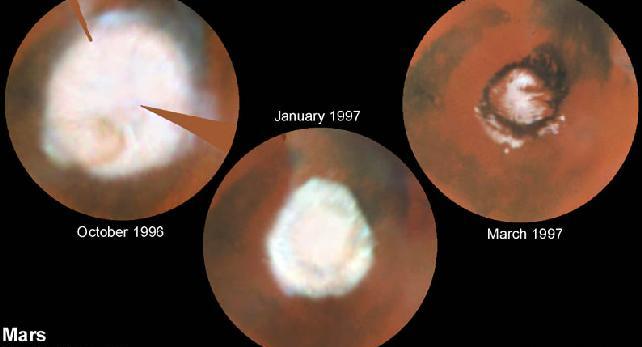The Ice Caps on Mars: Both CO2 and Water!
Once the atmospheric density got below about 50x what it is now, the planet would have become cold enough for CO2 to form ice caps at the poles. When this happened, much of the atmosphere would have collapsed into the polar ice caps to leave the cold, arid Mars that we see today. The CO2 moves from the atmosphere to solid frost on the ground, depending on the seasons. During the long winter, the CO2 will condense out of the atmosphere, particularly over the polar caps. This ice will form down to latitudes of 40o (Cincinnati Latitudes). During the Spring, the CO2 ices sublimate directly back into the atmosphere. During the Northern Summer, all the CO2 ices sublimate, leaving behind water ices and dust. The CO2covering the Southern Polar Cap never entirely disappears, so it is not known if water ice lies below it. Click HERE for animated gif of the above figure, and Here for a short movie.

Martian Soil and Rock
The Martian 'soil' is about 40% SiO2 (silicon dioxide), a fine
sand-like material and about 20% Fe2O3 (iron oxide) "dust". This dust
is very fine, its texture is similar to that of talcum powder.
The remainder of the Martian soil consists of clays, dust, gravel,
pebbles, stones and rocks of both simple and complex minerals similar
to those found on Earth.
Rocks from Mars have landed on Earth. More on that soon!